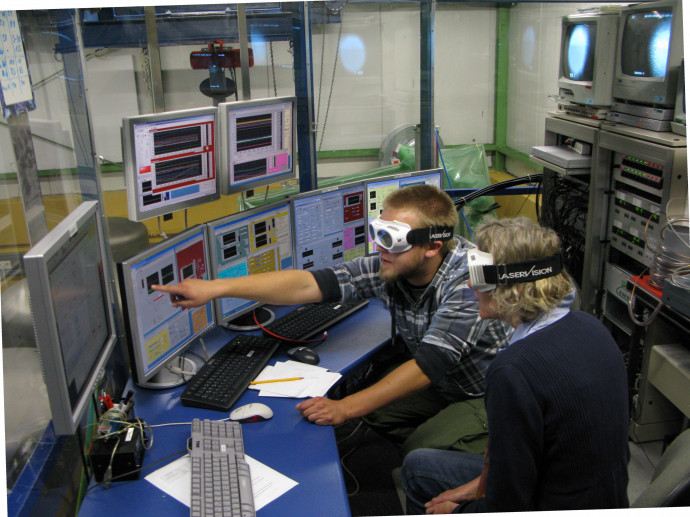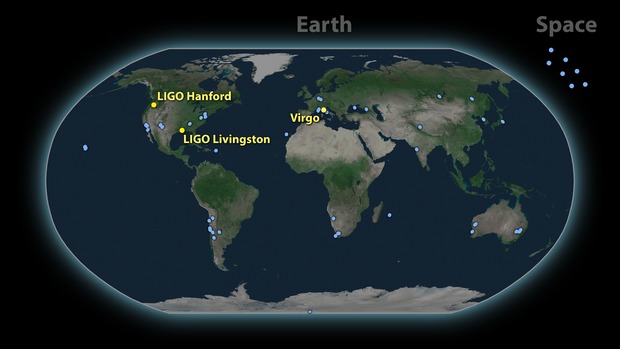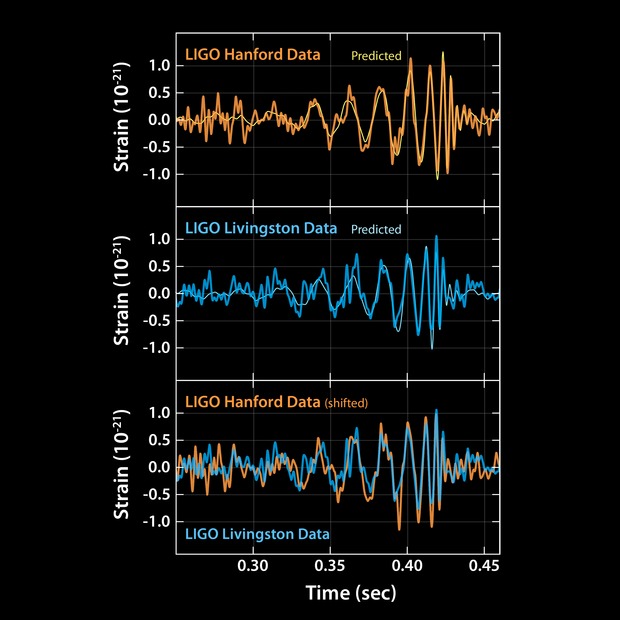Associate Professor Renate Meyer

An interview with Marsden Fund recipient Associate Professor Renate Meyer, University of Auckland, who is an applied Bayesian statistician. A German-born New Zealander, Renate has been internationally recognised as a pioneer in gravitational wave data analysis.
To clearly decipher the weak gravitational wave signals from instrumental noise, it is essential to very carefully characterise the noise using statistical methods. Renate has been a pioneer in the gravitational wave data analysis community since the 1990s.
In her research, Renate collaborates with high-profile European astrophysicists and statisticians to combine expertise in general relativity, gravitational waves, applied Bayesian statistics, and ‘big data’. It is a globally significant project at the frontiers of physics and statistics.
Renate’s contributions are helping make exotic and extreme events such as the coalescence of black holes – which are invisible to us using light – observable using gravitational waves.
Q: You’ve been at the University of Auckland since 1994, what brought you here and what made you stay?
A: Like so many Germans, I am fascinated by the natural beauty of New Zealand. I actually visited New Zealand in 1992, attending the International Biometrics Conference at the University of Waikato and the International Workshop on Matrix Methods in Statistics at the University of Auckland. When a Lectureship in Statistics was advertised in 1993, I applied and got the job.
What made me stay beyond the two years I had originally intended? Two things: the vibrant research environment at the University of Auckland, but probably more so the social aspect. Statistics and Maths had just amicably divorced in 1993, the small but growing Stats department felt very much like a big family with social activities going on all the time - there was something exciting on every weekend. And a few years later I met my Kiwi husband and once the kids were born and growing up here in this wonderfully supportive Glendowie community, Germany seemed far away – life had moved me along.
Renate hiking with sons Tim and Sean, and husband Kevin in the Tongariro National Park
Q: What sparked your interest in this particular research?
A: I got into gravitational wave research through chance. My collaborator, Nelson Christensen, likes to tell the story that it happened during one of the regular wine-tastings in the department, after a statistics seminar about Markov chain Monte Carlo (MCMC) methods that I organised. (MCMC are a class of algorithms for sampling from a probability distribution.) MCMC was the buzz word that evening and my collaborator was curious to find out what it was all about. When he then told me about the difficult parameter estimation problems for coalescing binary stars from observations of gravitational waves and the LIGO Scientific Collaboration that had just been formed under Rainer Weiss, his former PhD supervisor, I could not have imagined a more exciting field of research.
Q: How can gravitational waves be measured and where does statistics come in?
A: The direct measurement of gravitational waves was the result of a colossal effort of both theoretical and applied physicists and engineers that developed the laser interferometers used. These measurement devices are so sensitive they can measure the distance to the nearest star (4.2 light years) to an accuracy smaller than the width of a human hair.
Where statistical methods come into play is when trying to filter this very tiny gravitational wave signal out of instrumental and environmental noise. A technique called matched filtering is used to detect gravitational waves. And once a signal has been detected and its waveform recorded, the main interest is to infer more information about the source of the signal.
In the case of coalescing binaries, the gravitational signal has a characteristic chirp waveform. Using Bayesian computer-intensive simulation methods, so called MCMC methods, the parameters that drive this waveform, such as the masses of the two stars, their spins, their distances to the Earth, their sky location can be estimated. Most importantly, we can also quantify the uncertainty in these estimates based on our Bayesian approach. One example, where this uncertainty quantification is extremely important is when a neutron star merger has been observed, as, for instance, on August 17, 2017 – the very first neutron star merger ever detected!
In contrast to black holes, neutron star mergers emit light in the form of a flash of gamma rays and further electromagnetic radiation. An accurate determination of their sky location and distance from the gravitational wave measurement is utterly critical for a follow-up by traditional electromagnetic telescopes. This was possible with the 3 LIGO/Virgo detectors, enabling a frantic follow-up by 70 optical ground-and space-based telescopes that managed to locate the host galaxy at a distance of 140 million lightyears.
Q: Why is it important to measure gravitational waves?
A: They allow us to find out about objects such as black holes or even the remnants of the Big Bang that are not observable with light/electromagnetic telescopes. They are a means to find answers to questions such as where do the elements important for life come from, or why are iron and oxygen so abundant but heavy elements such as gold and silver so rare? They are a means to finding out about our very origin.
Q: International collaborations feature strongly in your work. How big is the global research community in this field and where does New Zealand fit within this?
A: International collaboration has been and will be immensely important for the research of our team. There are dozens of research groups all over the world working on algorithms for estimating the parameters of gravitational waves. We have formed a New Zealand team that is comprised of astrophysicists, cosmologists and applied statisticians, the so called NZ Astrostatistics and General Relativity Group, which is now an official working group of the International LISA Consortium.
LISA or the Laser Interferometer Space Antenna is a mission led by the European Space Agency with support from NASA to put a gravitational interferometer into space by 2034. LISA will be operating in a much lower frequency band than LIGO and will be able to observe gravitational waves from sources with much larger masses, such as supermassive black holes at the centres of galaxies or the stochastic background from the early evolution of the universe. Our focus is to contribute to the effort by developing robust Bayesian nonparametric estimation algorithms and accurate numerical waveform simulations.
My hopes are that we will be able to observe and statistically decipher gravitational wave burst signals from supernovae and continuous signals from pulsars which we have not yet observed with LIGO. But most exciting would be the detection of totally unforeseen objects. Being able to contribute to fundamental science about the evolution and structure of our universe through the development of bespoke statistical techniques is immensely satisfying.
Q: You work within a team of PhD students— have many of them gone on to pursue careers focused on this research? What have you taken away from this collaboration?
A: One of the most gratifying aspects in my career has been to see my PhD students develop and prosper. Marsden-funded PhD scholarships have been instrumental in the careers of some of them. Three of my PhD students have gone on to do postdocs at the Jet Propulsion Lab, Caltech, the Albert Einstein Institute in Hanover, Germany, and the University of Edinburgh, all working on parameter estimation for gravitational wave data (two of them funded by PhD scholarships from the Marsden Fund and through Nelson Christensen as co-supervisor can now state a direct lineage to Nobel Prize recipient Rainer Weiss). One of my PhD students from Pakistan is now Associate Professor of the Institute of Space Technology in Pakistan, continuing his research in gravitational waves. But statistical techniques that they have learned while developing MCMC algorithms for the analysis of gravitational waves are transferable and one of them, for example, is now Senior Research Fellow in the Department of Medical Statistics of the University of Goettingen, Germany.
More about Renate
Renate and Remy, her first step-granddaughter
Renate has been awarded two Marsden Fund grants:
- Bayesian Nonparametric Analysis of Multivariate Survival Data (1998)
- Bayesian Strategies for Astrophysical Data Analysis (2002)
She is a graduate officer for PhD candidates, associate editor for Journal of Statistical Computation and Simulation, chair of the NZ Astrostatistics and General Relativity Group, and a member of the research committee in the department of statistics. She was awarded a James Cook Research Fellowship from Royal Society Te Apārangi (2019-2021).
“Marsden Funding really made a world of difference,” says Renate. “It provided the means to actively engage in international gravitational wave research of the LIGO Scientific Collaboration and to develop a network of collaborators in the US and Europe. It not only provided a springboard for my own academic career but also for the careers of my PhD students.”
Renate Meyer
Associate Professor
"Being able to contribute to fundamental science about the evolution and structure of our universe through the development of bespoke statistical techniques is immensely satisfying."


